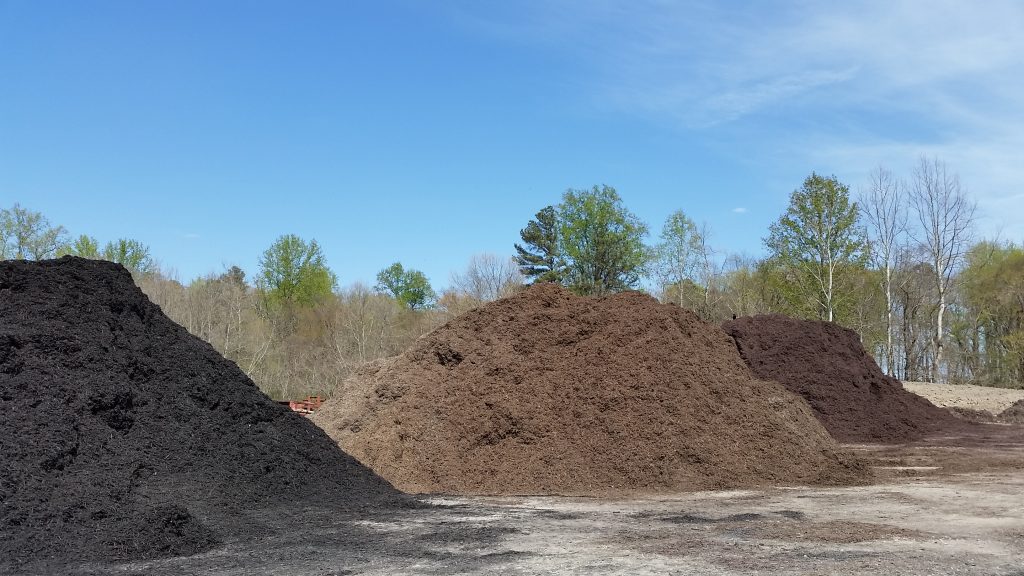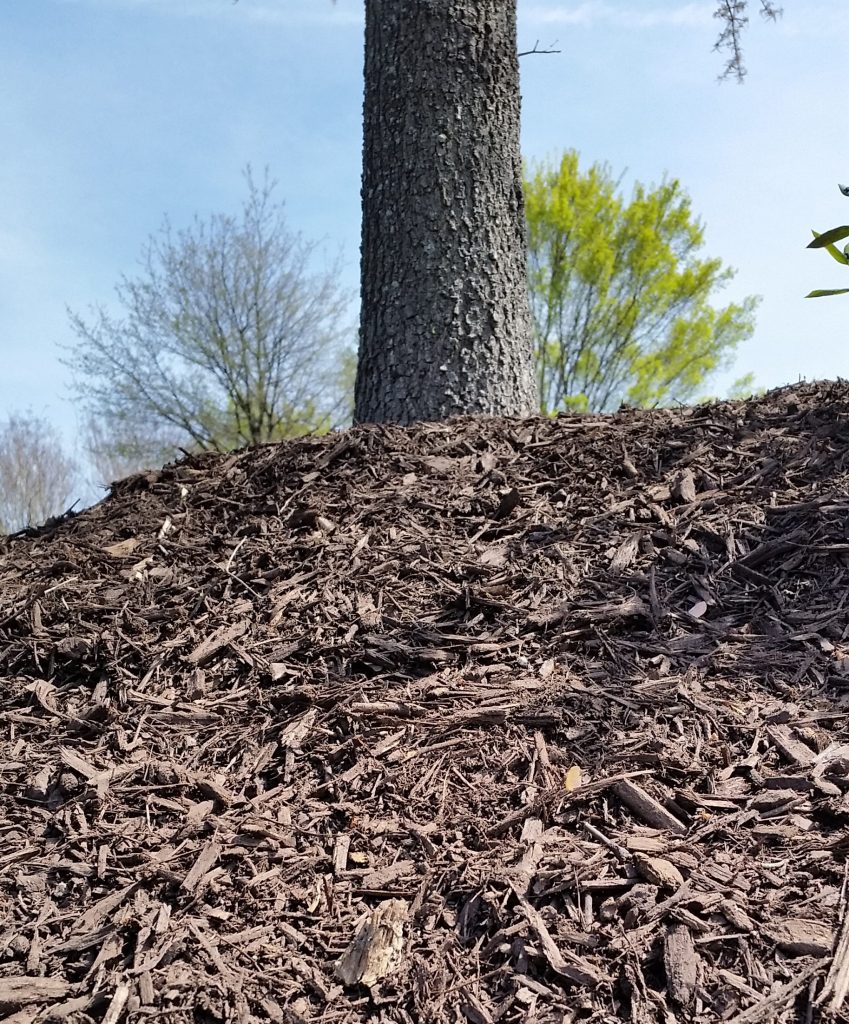The Scoop on Mulch
Mulching: Finding the Right Mulch and the Right Application

There’s no difference in the benefits of natural versus dyed mulch, other than aesthetics and personal preference. Black-dyed (left to right), natural and brown-dyed options are displayed at S. B. Cox Stone Yard in Goochland. (photo by Lynn Kirk)
Wheelbarrows, work gloves and sweat: these are the early signs of spring as homeowners dutifully mulch their plants and trees. Mulching has become a seasonal rite, the finishing touch for a well-dressed landscape and a standard for curb appeal.
Mulching is an investment in plant health, too. When Richmond is plagued by drought and extreme temperature swings, mulch helps soil hold moisture and insulates roots, which is especially important for less-developed and shallow root systems. Mulch stabilizes soil against erosion and provides natural weed control. As an extra bonus, organic mulch can improve soil fertility and structure.

Mulching past the root crown, known as volcano mulching, is harmful to the tree and wasteful to the wallet. (Photo by Lynn Kirk)
So yes, mulch is good – if correctly applied. An overdose of most anything, including mulch, can do more harm than good. Volcano mulching, sometimes called the cone of shame, is excessive mounding of mulch above the root crown. Though fairly commonplace, over time this practice can smother and kill that which it’s supposed to protect. It creates an environment for disease and rot, as well as a haven for insects and rodents that feed on tender roots and bark. Volcano mulching also causes non-structural tree roots to grow. As the tree gets larger, these roots cannot provide adequate support, sometimes causing the tree to fall over in windy weather. So remember, mulch should be no more than two or three inches deep, and it should not touch the trunk of shrubs and trees. Stop and evaluate before automatically adding another layer, since some years a good fluffing may be all that’s needed.
Proper timing is equally important. While vegetables and annuals may benefit from light mulching both spring and fall, perennials need only a spring application. Fruit trees also prefer their mulch during the spring, but the mulch should be removed in the fall since most fruit trees have thin bark that is highly susceptible to damage from voles that overwinter in the mulch.
Like the guideline “right plant, right place,” horticulturists also recommend “right mulch, right application.” Technically mulch is anything that covers the soil for the benefit of the plant, so deciding the best type can be tricky. Each type has advantages and disadvantages, so conduct online research or you can visit Lewis Ginter Botanical Garden’s Lora M. Robins Library. For more general mulching tips see our blog post about proper mulching techniques.
Mulching tips
- Wear gloves when spreading mulch, since urushiol (from poison ivy) and other irritants may be ground in with the mulch.
- Avoid cocoa hull mulch if you have pets, as it’s poisonous for cats and dogs when ingested.
- Don’t purchase mulch that exhibits weeds, since those seeds will be spread along with the mulch and potentially germinate in unwanted places.
- Mulch that is too green (not yet decomposed) can overheat plants and rob nitrogen from the soil as it biologically breaks down.
- Keep an open eye for snakes that can hide under warm compost and mulch piles.
- Consider keeping a corner of your yard mulch-free for nesting pollinators that need bare soil.
This article first appeared in the Richmond Times-Dispatch in May 2016.